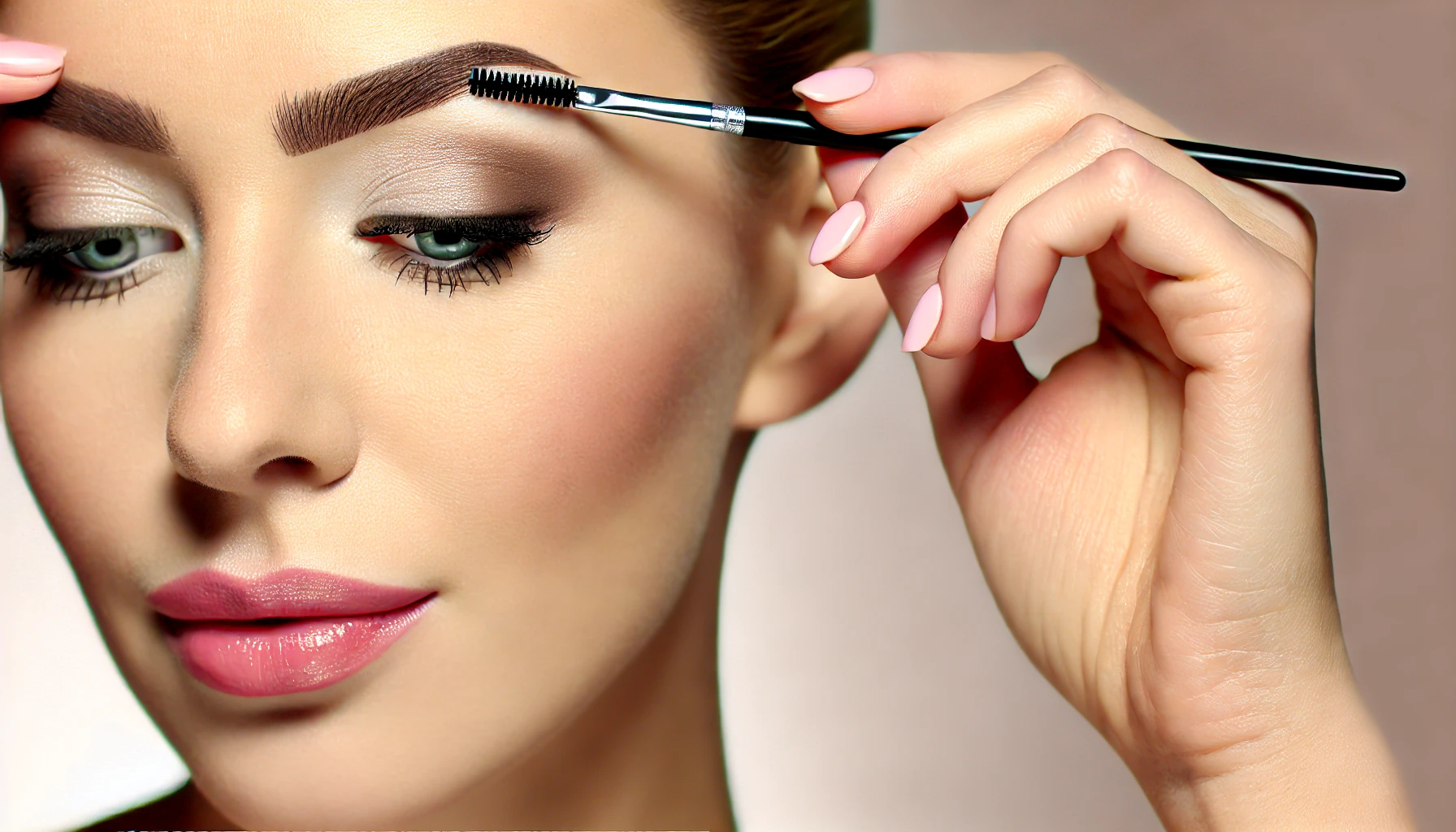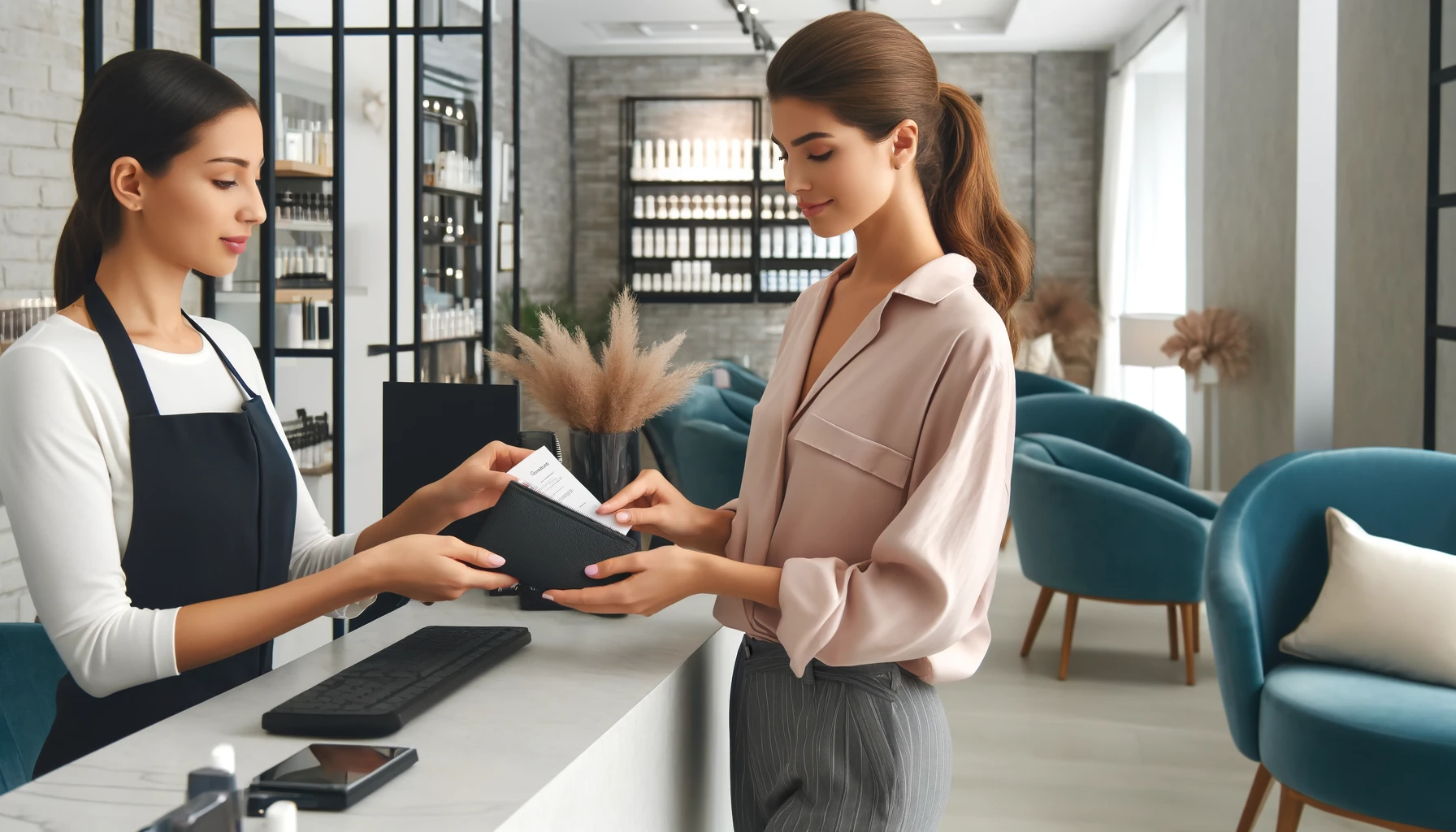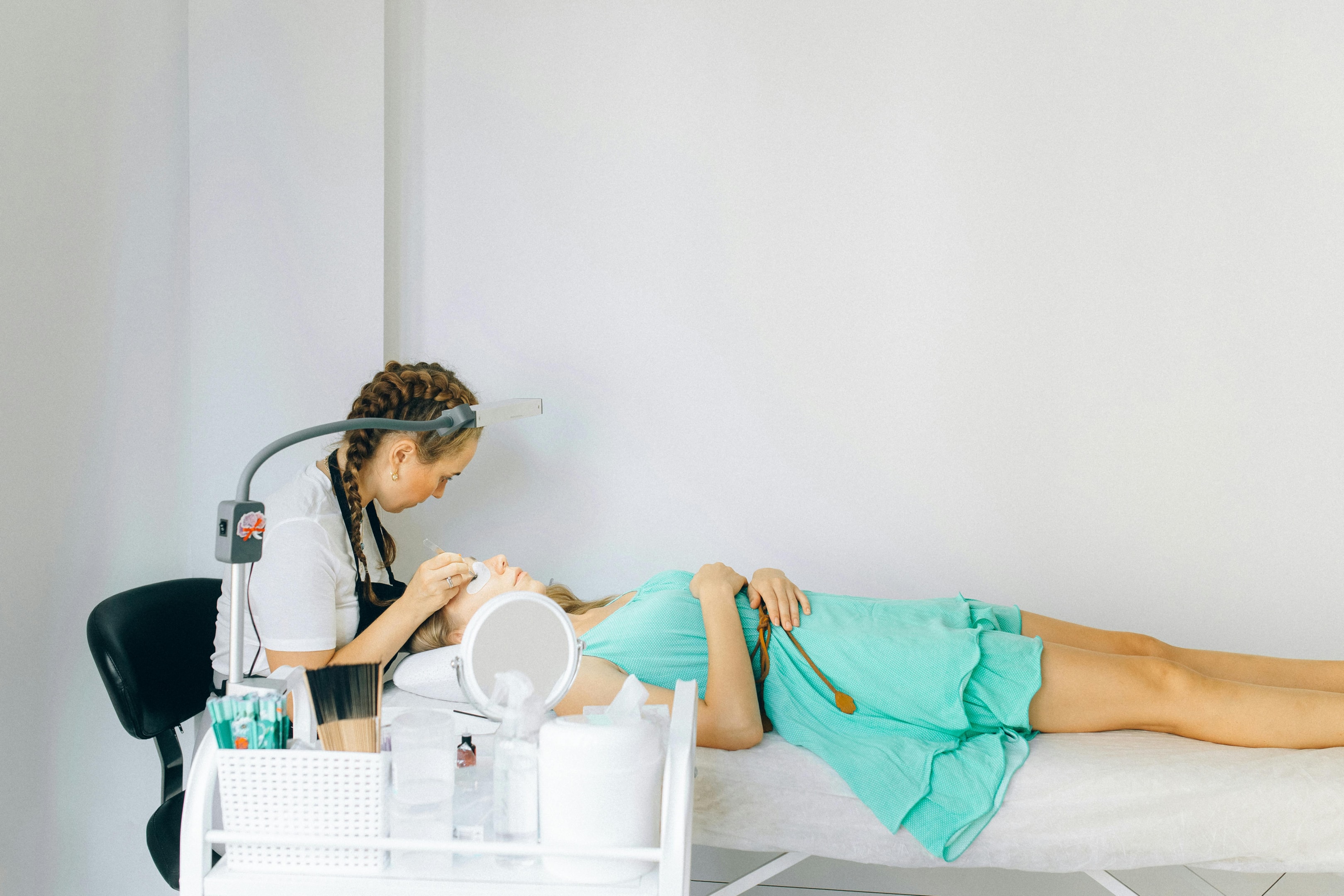Everything you need to know about microblading
Microblading offers a semi-permanent solution for fuller and more defined eyebrows. In this article, you will learn everything you need to know about microblading: what it is, how it works, the benefits, and the risks. Get a comprehensive overview and decide if microblading is right for you.
The Most Important Points in Brief
-
Microblading is a semi-permanent eyebrow cosmetic technique defined by fine, hair-like strokes, and is particularly suitable for people with thin eyebrows.
-
The treatment offers natural and long-lasting results but requires careful aftercare to ensure durability of 1 1/2 to 2 years.
-
The cost of microblading ranges from 300 to 600 euros, and it is important to choose a professional cosmetic studio to avoid complications like infections or asymmetrical eyebrows.
What is Microblading?

Microblading involves making small cuts in the skin to mimic the appearance of full and well-defined eyebrows. It is a semi-permanent form of eyebrow cosmetics. This manual technique uses color pigments that are applied to the skin without a machine, aiming to define the eyebrows with fine, hair-like strokes. Originally from Asia, this method has gained popularity worldwide.
The special thing about microblading is the use of a special blade that allows very fine lines to be etched into the skin, making the eyebrows look natural and precise. These lines do not vibrate, allowing for a more even and natural result. Microblading is particularly advantageous for people with thin or barely-there eyebrows, offering a long-lasting alternative to daily eyebrow makeup application. The method saves time and provides permanently beautiful eyebrows.
Microblading Summary
👁️ Small cuts for full, defined eyebrows.
💉 Color pigments applied manually, without a machine.
✏️ Fine, hair-like strokes for a natural look.
🌍 Popular worldwide, originally from Asia.
🔪 Special blade for precise lines, no vibration.
👍 Ideal for thin eyebrows, saves time, long-lasting result.
Advantages of Microblading
Microblading offers numerous advantages over traditional permanent makeup. The technique enables:
-
finer and more precise lines that do not spread and stay in place
-
more natural and realistic eyebrows
-
hairs that blend harmoniously into the natural eyebrows and do not look artificial
Another major advantage is the longevity of the results. Long-lasting microblading is water-resistant and smudge-proof, which is particularly convenient for active people.
The goal of the microblading specialist is to highlight the customer's advantages and emphasize their natural beauty in an absolutely natural and fascinating way.
Advantages
🎨 Finer and more precise lines: do not spread, stay in place.
🌿 More natural and realistic eyebrows.
🔍 Hairs blend harmoniously into natural eyebrows, not artificial looking.
🏊♀️ Longevity: waterproof and smudge-resistant, ideal for active people.
🌟 Highlights natural beauty in a fascinating way.
Compatibility of Microblading
As with any cosmetic treatment, there are possible side effects and risks with microblading:
-
A common side effect is the occurrence of infections due to the tiny incisions in the skin. Therefore, hygiene is extremely important to minimize the risk of infection. Professional beauticians inform about the procedure and discuss possible risks in detail.
-
Allergic reactions to the color pigments used are also possible.
-
Pain and swelling are common after a microblading treatment, although many women do not find the pain particularly unpleasant.
-
Improper application can lead to asymmetrical eyebrows, underscoring the importance of an experienced specialist.
-
For oily skin, the result can fade more quickly, or the color of the brows may change over time.
-
A strongly reddish complexion can cause the brows to take on unwanted red hues after microblading.
Microblading Treatment Process

The microblading treatment process involves several steps that are carefully planned and carried out to achieve optimal results. First, a comprehensive consultation takes place, where the customer is informed about risks and a treatment contract is signed. This is followed by the exact measurement and pre-drawing of the eyebrow shape as well as the choice of color pigments for an individual result.
The actual microblading procedure takes approximately two hours and includes the following steps:
-
Consultation
-
Preparation
-
Pre-drawing
-
Pigmentation
-
Aftercare
Each of these steps helps to achieve precise and natural results that last for several months.
Consultation
Consultation is a crucial step in the microblading process. It first determines the individual needs of the customer, including the desired eyebrow shape and color. A skin analysis ensures that the appropriate pigments are selected based on skin type and natural hair color.
During the consultation, all customer questions about the treatment and the expected results are also clarified. Visual representations, such as photos or drawings, help demonstrate the possible results and ensure that the customer is fully satisfied.
Preparation
Before the microblading treatment, there are a few important steps that must be followed. This includes refraining from plucking, coloring, and waxing the eyebrows for at least seven days before the treatment. In addition, 24 hours before the treatment, blood-thinning drinks and foods such as coffee, alcohol, and energy drinks should be avoided.
Preparation also includes the thorough cleaning of the eyebrow area to remove dirt, oil, and makeup. A pre-drawing of the desired eyebrow shape with a cosmetic pencil serves as a guideline for microblading.
Pre-drawing
Pre-drawing is another critical step in the microblading process. The desired eyebrow shape is precisely drawn with a special pencil. A symmetry check ensures that both eyebrows look even and harmonious.
After pre-drawing, any unevenness is corrected, and the shape is adjusted to the customer's wishes. The color choice is based on the customer's natural hair color and skin undertone to achieve a natural result.
Pigmentation
Pigmentation is done using a special microblading pen and fine disposable needles to draw precise hairs. This technique allows the natural eyebrows to be imitated with precise lines, achieving a realistic result. Multiple passes increase the color intensity and density.
During the pigmentation process, the work is regularly checked and adjusted to ensure that the result meets expectations. Various techniques such as 3D, 6D, or HD microblading combine hair drawing and shading to make the brows more expressive.
An experienced professional explains each step in detail and has a good eye for the perfect shape of the eyebrows and eyes. This ensures that the result is not only natural but also aesthetically pleasing.
Aftercare
Aftercare is crucial to ensure the durability of the microblading results. Immediately after the treatment, the eyebrow area should be kept dry and contact with water should be avoided. Certain activities such as swimming, sauna, or intense sweating should be avoided for at least a week.
Long-term care includes using special care products that support the healing process and maximize the durability of the pigment. Regular follow-up examinations and touch-up sessions help to maintain the color and shape of the eyebrows in the long term.
Procedure Summary
1. Consultation
Comprehensive consultation, risk clarification, and selection of eyebrow shape and color.
2. Preparation
Cleansing the eyebrows, refraining from plucking and coloring, pre-drawing the shape.
3. Pre-drawing
Precise pre-drawing of the eyebrow shape, symmetry check, and adjustment to the customer's wishes.
4. Pigmentation
Using a microblading pen for fine hair drawing, intensifying the color.
5. Aftercare
Avoiding water and certain activities, using special care products for pigment care.
Microblading Durability and Care

The durability of the microblading result is usually one and a half to two years. Careful aftercare is crucial to maintain the pigmentation in the long term. After about 5-8 days, the wound healing phase is complete, and the final color result shows after about three weeks.
-
🔖Day 0-1
Treatment completed, let dry.
-
📅Day 5-8
Wound healing, do not pull off crusts.
-
🌈Week 3
Final color visible.
-
🗓️1.5 - 2 Years
Touch-up session needed.
In the first days after the treatment, certain cosmetics and treatments should be avoided to not impair healing. This includes:
-
Avoiding makeup
-
Avoiding workouts
-
Avoiding sauna sessions
-
Avoiding sunbathing
During this time, Vaseline should be applied to protect the eyebrows.
Long-term care can be summarized with the 6-S rule, which is important for every woman:
6-S Rule: Long-term Care
-
☀️
No sun
-
🏖️
No solarium
-
🔥
No sauna
-
🏊♀️
No swimming
-
💄
No makeup
-
💦
No sweating
This helps preserve the pigments and maximize the durability of the microblading.
Cost of Microblading

The cost of a microblading treatment typically ranges from 300 to 600 euros, depending on the provider and the services included. Some providers offer consultation and follow-up appointments in addition to microblading.
For special techniques such as Powder Brows, a shaded variant of microblading, the costs range from 299 to 419 euros. Touch-up sessions within 12 months cost between 159 and 219 euros, and a third follow-up session, if needed, costs between 49 and 79 euros. It is strongly recommended to stay away from cheaper offers, as they often do not offer the necessary quality and safety.
Different Techniques in Microblading
There are different techniques in microblading that can be applied depending on the desired result. A popular method is the HD Line Brows, which combines the finest hair drawing with powder shading, also known as microshading, to achieve a deceptively realistic result.
The PhiBrows technique uses vegan, cruelty-free colors without heavy metals or iron oxides, which lose their intensity over time but do not change color. This technique manually draws individual hairs in the natural direction of the eyebrows to achieve a realistic result, similar to Cara Delevingne.
| Technique | Description | Special Features |
|---|---|---|
| HD Line Brows | Finest hair drawing combined with powder shading, also known as microshading. | Achieves a deceptively realistic result with a softer finish. |
| PhiBrows | Uses vegan, cruelty-free colors without heavy metals or iron oxides. | Manually draws individual hairs in the natural direction for a realistic result. |
When to Avoid Microblading?

There are certain situations in which microblading should be avoided. People with skin conditions like eczema or psoriasis should avoid the treatment as it could worsen their skin problems. People with active acne or very oily skin should also be cautious, as the ink may not penetrate the skin properly and may spread.
Pregnant or breastfeeding women should also avoid microblading as the safety of the pigments for the unborn child or newborn is not guaranteed. People with blood clotting disorders or a tendency to keloid formation should also refrain from the treatment, as the cuts on the skin can lead to heavy bleeding or scarring.
🚫 When to Avoid Microblading?
- 🧴 Skin Conditions
- 🌿 Oily Skin
- 🤰 Pregnancy and Breastfeeding
- 🩸 Blood Clotting Disorders
- ⚠️ Tendency to Keloid Formation
How to Recognize a Good Cosmetic Studio?

A good cosmetic studio can be recognized by various quality features. A free consultation should always take place before the procedure, so that wishes and ideas can be discussed. Experienced professionals use sterile tools and high-quality, hypoallergenic pigments to ensure high quality and safety standards.
A good specialist advises against trendy shapes and prefers a natural eyebrow shape that can be changed later. In reputable studios, a free follow-up treatment after microblading is common, indicating that customer satisfaction comes first. Before the treatment, one should find out about the studio and the specialist's experience, as a cosmetics education is not mandatory.
✅ Checklist for a Good Cosmetic Studio
- 🗣️ Free Consultation
- 🧴 Sterile Tools
- 🏆 Experience
- 🔄 Free Follow-up Treatment
- 🔍 Information Gathering
Conclusion
Microblading is a technique for eyebrow modeling that delivers precise and natural results. It offers numerous advantages, including longevity and water resistance, and is particularly suitable for people with thin or barely-there eyebrows. The treatment process includes several carefully planned steps from consultation to aftercare to achieve optimal results.
However, it is important to consider possible risks and side effects and pay attention to the compatibility of the treatment. Choosing a good cosmetic studio plays a crucial role in this. Overall, microblading offers an excellent way to highlight the natural beauty of the eyebrows and simplify the daily makeup routine.
Test Your Knowledge About Microblading!
Frequently Asked Questions (FAQ)
How long does Microblading last?
Microblading usually lasts one and a half to two years, depending on skin type and aftercare. So it is a long-lasting solution for perfectly shaped eyebrows.
What is the cost of a Microblading treatment?
A microblading treatment usually costs between 300 and 600 euros, depending on the provider and the services included. Therefore, it is important to consider the price-performance ratio.
What are the risks of Microblading?
Risks of microblading include infections, allergic reactions, pain, swelling, and asymmetrical results. Therefore, it is important to seek an experienced specialist to minimize these risks.
Can anyone have Microblading done?
No, not everyone is suitable for microblading, as there are certain contraindications such as skin conditions, acne, blood clotting disorders, and pregnancy or breastfeeding. Therefore, it is important to have a consultation with a professional before treatment.
How to recognize a good cosmetic studio for Microblading?
A good cosmetic studio for microblading can be recognized by a free consultation, the use of sterile tools and high-quality pigments, as well as a free follow-up treatment. Find out about the studio and the specialist's experience before the treatment.


